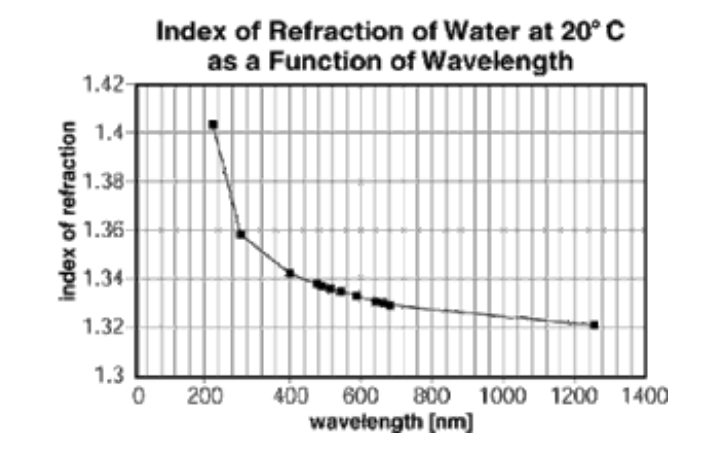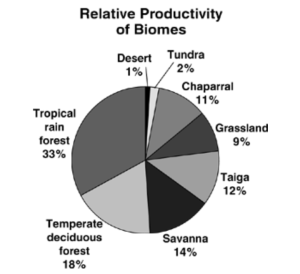ACT Science Test: How Can I Analyse Graphs Meaningfully?

How can I analyze graphs meaningfully? Analyzing graphs is a crucial skill in various fields and professions, including science, mathematics, and data analysis. However, many individuals struggle to extract meaningful insights from graphs. In this post, we will explore how to analyze graphs meaningfully and unlock their secrets.
ACT Questions That Need Graph Interpretation
Students need to be able to know how to analyze graphs and draw out meaning from them. In the ACT Science test, the students need to be familiar with different topics related to graphs and understand them well. Data representation is one of them that puts students in a tight corner because they will have to interpret graphs.
Data Representation passages are the first type of stimulus you will see on the ACT science test, and they make up 30% to 40% of the test. You can immediately identify Data Representation questions because you will usually see some kind of a graph, scatterplot, figure, or table, which you will then be required to understand and interpret.
Data Representation questions tend to be relatively straightforward in terms of scientific concepts, so the driving force behind the majority of them is determining what the data means and what conclusions you can draw from them.
Each Data Representation passage begins with a written introduction that presents the scientific topic covered or the question that is being asked. It usually provides some key scientific vocabulary related to the topic, and it introduces the data you will be asked to interpret and analyze.
The figure is the most important part of any Data Representation passage, so the introduction paragraph is often no longer than a few sentences. Data Representation passages often also include experiment details, even though the protocol itself is not the focus of the questions. This information is only provided to put the data into context.
Finally, the data appears as a data table, a graph, or both. You will often see multiple related figures, so it is important to keep track of what each one is telling you. Fortunately, if the written text of a passage is confusing, the visuals can generally help you determine precisely what is happening in the experiment.
Following each Data Representation passage are approximately five questions that test you on several key skills in data analysis:
- understanding the data
- analyzing graphical figures
- concluding the data
- assessing the validity of the data
- thinking about future work based on the data
What Scientific Question Is This Experiment Addressing?
Every scientific experiment is performed to answer a scientific question, which describes the purpose of the experiment, and that question is almost always directly addressed in the written paragraphs. Whenever you encounter a Data Representation passage, the first thing you should do is determine the scientific question.
It is important to figure out exactly what you’re looking at as soon as possible so that you don’t waste time thinking about a problem incorrectly. To answer the questions, you have to be able to read a figure and extract information from it so that you can start to draw conclusions and think about the data critically.
If you do not know the scientific question, you won’t know what conclusions to draw. It may help to circle keywords as you read the written paragraphs to help you zoom in on the most important concepts.

The written paragraphs may also include a hypothesis or an educated prediction about the outcome of the experiment. Alternatively, when you get to the questions themselves, you might be asked to choose a logical hypothesis from a group of choices. Understanding the scientific question is critical to understanding or developing a hypothesis because a hypothesis for a given experiment must address the appropriate variables.
Two Types of Variables
The independent variable is the condition that the scientist changes throughout the experiment.
The dependent variable is the condition that the scientist measures during the experiment.
A scientific question for any experiment will identify both the independent and dependent variables for that experiment.
You do not need to worry if you are confused by the text in a Data Representation question or if you don’t understand some of the scientific terminology! Often the figure itself can tell you all you need to know to determine the scientific question.
If the figure is a diagram or picture, examine it closely and hone in on what is happening in the experiment and what is being measured. If the figure is a table, check the headers at the top of the table to see which variables are being changed or measured, as the headers will usually include the independent and dependent variables.
If the figure is a graph or scatterplot, the y-axis (the vertical axis) will usually be the dependent variable, while the x-axis (the horizontal axis) will usually be the independent variable.
Thus, while the text will help you to understand the specifics of the experiment more easily, you can very often determine what is happening in an experiment based on the diagrams and figures alone.
ACT Science Test: How Can I Analyse Graphs Meaningfully?
Step 1: Understand the Context: Before diving into the graph, it’s essential to understand the context in which the data was collected. What was the purpose of the study? What variables were measured? What was the sample size? Knowing the context will help you interpret the results more accurately.
Step 2: Identify the Type of Graph: There are various types of graphs, including line graphs, bar graphs, scatter plots, and histograms. Each type of graph serves a specific purpose, and understanding the type of graph you’re working with will help you analyze it more effectively.
Step 3: Look for Patterns and Trends: Graphs often display patterns and trends that can reveal valuable insights. Look for changes over time, correlations between variables, and outliers that may indicate errors in data collection.
Step 4: Analyze the Axes: The x-axis and y-axis provide valuable information about the data. Check the scales, labels, and units to ensure you understand what the axes represent.
Step 5: Evaluate the Data: Consider the source of the data, the sample size, and any potential biases or limitations. Evaluate the data quality and whether it’s reliable enough to conclude from.
Step 6: Draw Conclusions: Based on your analysis, conclude the data. Avoid overinterpreting the results, and be mindful of any limitations or potential sources of error.
Step 7: Communicate Your Findings: Effective communication of your findings is crucial. Use clear language, avoid technical jargon, and use visual aids to help others understand your conclusions.
By following these steps, you’ll be able to analyze graphs meaningfully and unlock the insights they hold. Remember to approach graph analysis with a critical eye and a clear understanding of the context, and you’ll be well on your way to becoming a proficient graph analyst.







